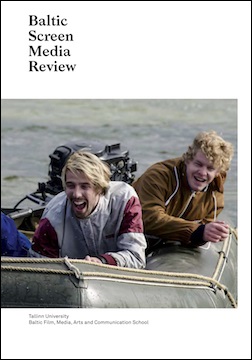Facing the Foreign: The Aftermath of World War II and Estonian as Otherness in Two Films by Ingmar Bergman
Facing the Foreign: The Aftermath of World War II and Estonian as Otherness in Two Films by Ingmar Bergman
Author(s): Christo BurmanSubject(s): Cultural history, Fascism, Nazism and WW II, Film / Cinema / Cinematography, Sociology of Art, History of Art
Published by: Tallinna Ülikooli Balti Filmi- ja Meediakool
Keywords: Estonian culture; cinematography; Ingmar Bergman; film; World War II;
Summary/Abstract: Drawing on a few concepts of postcolonialism, including Edward Said’s idea of Orientalism and Stuart Hall’s theory on representation, this article explores the representations of Estonian culture and language in two films by Ingmar Bergman, This Can’t Happen Here (Sånt händer inte här, Sweden, 1950; also known as High Tension) and The Silence (Tystnaden, Sweden, 1963). Through a descriptive textual analysis of the Estonian representational elements in these films, the article suggests that Bergman uses Estonian language and culture to establish a certain kind of Otherness, marking a cultural hegemony and exotifying a new foreign element in post-war Sweden. An additional aim of the article is to present and contextualise the exiled Estonian actors that starred in This Can’t Happen Here, as this has not been done in a scholarly context, and since the film ended up being their only cinematic appearance in their new adopted country.
Journal: Baltic Screen Media Review
- Issue Year: 2018
- Issue No: 6
- Page Range: 4-19
- Page Count: 16
- Language: English

